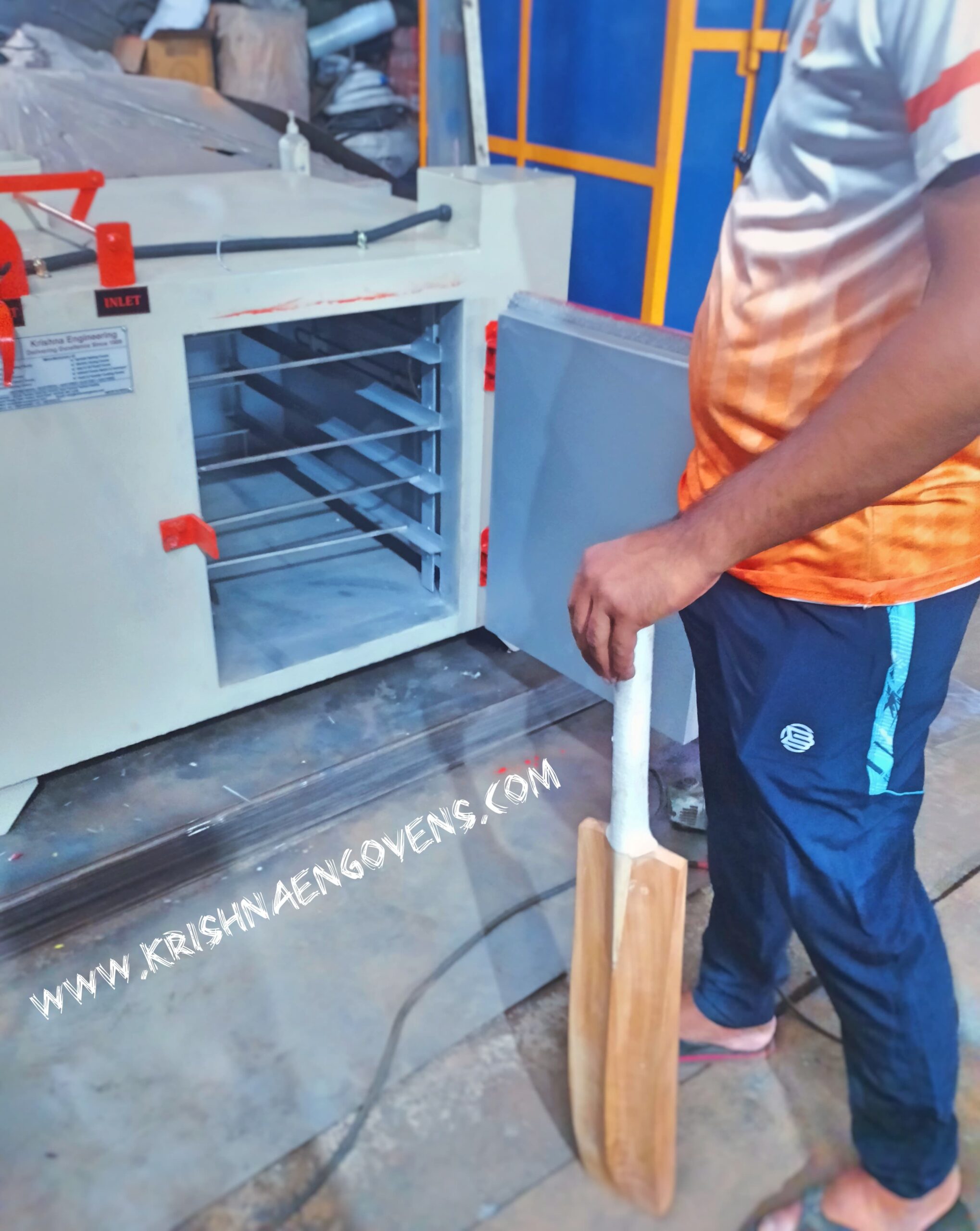The Ultimate Guide to Drying Cricket Bats for Perfect Performance
In the world of cricket, the quality of a bat can make or break a player’s performance. One of the most overlooked yet crucial aspects of bat manufacturing is moisture control. Proper drying not only enhances the bat’s durability but also improves its performance on the field. Whether you are a cricket bat manufacturer or a cricket enthusiast, understanding the drying process can help you ensure that your bats are top-notch. In this blog, we’ll discuss why drying is essential, traditional vs. modern drying methods, and how advanced drying ovens are revolutionizing cricket bat production.

Why Welding Electrode Baking is Important
Electrodes, especially low-hydrogen types, are highly sensitive to moisture absorption. Here’s why proper baking is critical:
1. Prevention of Hydrogen Cracking: Moist electrodes can release hydrogen into the weld, causing cracking and compromising structural integrity.
2. Improved Weld Quality: Dry electrodes produce clean, consistent welds with fewer defects.
3. Compliance with Standards: Many welding codes, such as AWS (American Welding Society), require specific electrode baking and storage conditions to ensure safety and quality.

For manufacturers, poor drying can lead to dissatisfied customers and increased product returns.
Traditional Methods of Drying Cricket Bats:
1. Air Drying:
Advantages: Low-cost and simple.
Disadvantages: Time-consuming, requires ample space, and is weather-dependent.
Modern Solution: Using Krishna Engineering’s Cricket Drying Ovens (Dryers)
Industrial drying ovens are rapidly becoming the preferred choice for manufacturers aiming for efficiency and consistency. These ovens allow precise control over temperature and drying time, ensuring uniform moisture removal.

Ideal Drying Conditions for Cricket Bats
When using an industrial oven:
1. Temperature: Maintain a range of 60-80°C to avoid damaging the wood fibers.
2. Duration: 2-3 hours for reducing moisture by 50 – 100 grams, depending on the wood type and initial moisture content.
3. Moisture Levels: Aim for 2-4% final moisture content for optimal bat performance.

Benefits of Industrial Drying Ovens
1. Uniform Drying: Even heat distribution ensures that all parts of the bat dry uniformly.
2. Time Efficiency: Significantly reduces drying time compared to traditional methods.
3. Energy Efficiency: Modern ovens, like those from Krishna Engineering, are designed to minimize energy consumption while delivering consistent results.
4. Hygienic Drying: Closed systems prevent contamination from dust or pests.

Why Choose Krishna Engineering’s Drying Ovens?
At Krishna Engineering, we specialize in manufacturing industrial ovens tailored to various applications, including cricket bat drying. Our ovens are equipped with:
1. Advanced temperature control systems for precise drying.
2. High-efficiency insulation to reduce energy costs.
3. Customizable sizes to meet the specific needs of cricket bat manufacturers.
Case Study: How Our Ovens Helped a Cricket Bat Manufacturer
A leading cricket bat manufacturer in India struggled with inconsistent drying using traditional methods. After switching to Krishna Engineering’s tray dryers, they saw:
A 30% increase in production efficiency.
Improved consistency in bat quality.
Positive feedback from players regarding bat performance.

Conclusion
Drying cricket bats is more than just a technical step; it’s an art that requires precision and the right equipment. Industrial drying ovens have transformed the way manufacturers approach this process, ensuring quality, efficiency, and customer satisfaction. If you’re a cricket bat manufacturer looking to streamline your operations and enhance product quality, get in touch with Krishna Engineering today. Let us help you deliver bats that are match-ready and built to perform!




